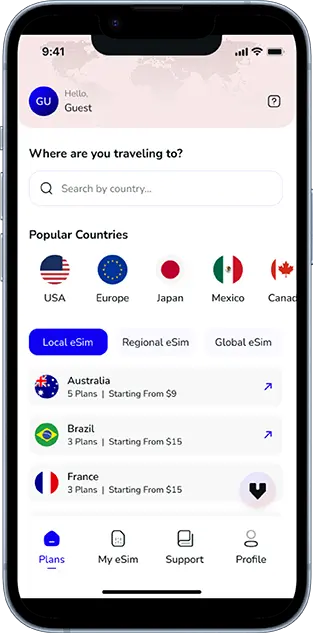Note that iPhone devices from Mainland China aren’t eSIM compatible. Also iPhone devices from Hong Kong and Macao aren’t compatible (except for iPhone 13 Mini, iPhone 12 Mini, iPhone SE 2020 and iPhone XS)
If you’re wondering about the best time to visit Thailand, the cool season from November to February is the perfect choice. With comfortable temperatures, low humidity, and clear skies, this period offers ideal conditions for beach vacations, outdoor adventures, and cultural festivals. Whether you’re exploring bustling Bangkok, relaxing on pristine islands, or trekking through the northern mountains, Thailand’s cool season provides the best travel experience. Discover why this is the ultimate time to visit and how to make the most of your trip.
Best Destinations for Winter Travel
The cool season, spanning from November to February, is often considered the best months to travel Thailand. During this time, the weather is dry and pleasant, with average temperatures ranging from 70°F to 85°F. This makes it perfect for exploring both urban and rural destinations. Here are some top picks:
- Bangkok: Dive into bustling markets, visit iconic landmarks like the Grand Palace, and enjoy the vibrant street food scene without the sweltering heat.
- Chiang Mai: Nestled in the north, this city offers cooler temperatures and hosts the famous Yi Peng Lantern Festival in November.
- Andaman Coast: Head to Krabi or Phuket for pristine beaches, crystal-clear waters, and outdoor adventures like snorkeling or island hopping.
Why November to February Is Ideal?
If you’re wondering when to visit Thailand for the best experience, the cool season is the answer. Here’s why:
- Comfortable Weather: Unlike the hot season, the temperatures are mild, and humidity levels are lower, making outdoor activities much more enjoyable.
- Festivals Galore: This period is packed with cultural celebrations, including Loy Krathong and New Year festivities.
- Peak Accessibility: Roads, hiking trails, and islands are easily navigable, with minimal disruptions from rain.
Activities to Enjoy in the Cool Season
Thailand’s cool season is perfect for a variety of activities. Here’s what you shouldn’t miss:
- Outdoor Adventures: Go trekking in Doi Inthanon National Park or explore the waterfalls in Khao Yai.
- Beach Escapes: Relax on the Andaman Coast’s beaches, where the weather is sunny and the seas are calm.
- Cultural Exploration: Visit ancient temples in Ayutthaya or Sukhothai and soak in the country’s rich history.
Pro Tip: Since this is the peak tourist season, book accommodations and activities in advance to secure the best deals. This is one of the most essential Thailand travel tips for first-time visitors.
In summary, the cool season is the highlight of Thailand travel seasons, offering the perfect blend of weather, activities, and cultural experiences. Whether you’re seeking adventure or relaxation, this is undoubtedly the best time to explore the Land of Smiles.
Embracing the Hot Season in Thailand
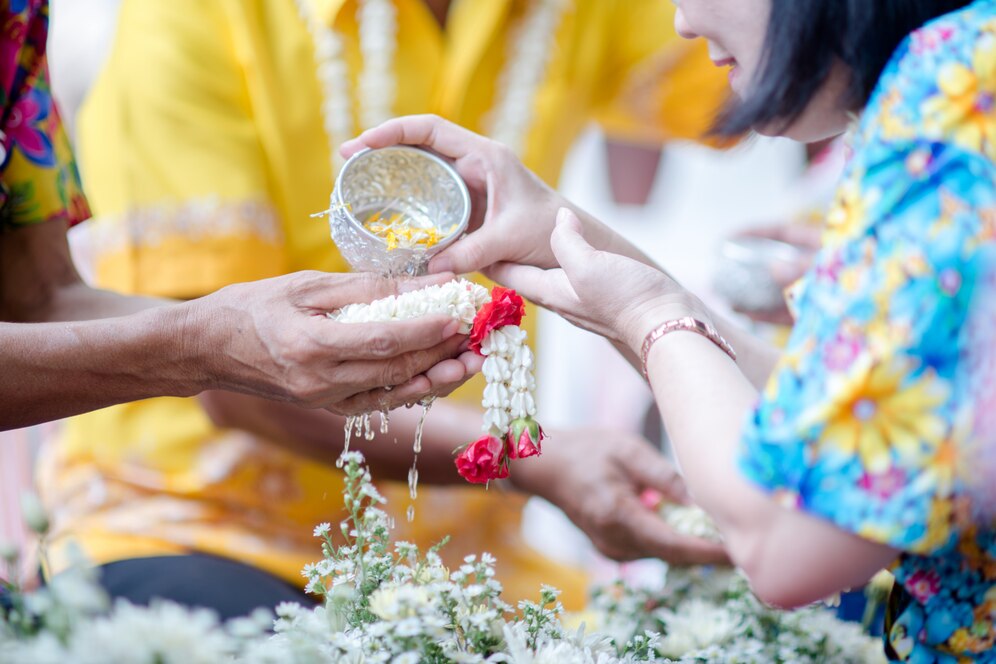
Top Festivals Like Songkran
Thailand’s hot season, from March to May, brings with it one of the country’s most famous festivals: Songkran. Celebrated in mid-April, this traditional Thai New Year event is marked by nationwide water fights and cultural rituals. Songkran is not just about fun; it’s deeply rooted in Thai traditions, such as visiting temples and paying respects to elders. Cities like Chiang Mai and Bangkok come alive with parades, music, and street parties. If you’re planning to visit during this time, don’t forget a waterproof bag for your essentials—you will get soaked!
Best Beaches to Visit in Summer
When the heat cranks up, Thailand’s beaches become the perfect escape. On the Andaman Coast, places like Phuket and Krabi offer pristine waters and shady palm trees. Meanwhile, the Gulf of Thailand boasts islands like Koh Samui and Koh Tao, which are slightly cooler and ideal for snorkeling or diving.
| Beach Destination | Average Temperature (°F) | Activities to Enjoy |
|---|---|---|
| Phuket | 89°F | Island tours, jet skiing |
| Koh Samui | 90°F | Snorkeling, relaxing resorts |
| Krabi | 88°F | Rock climbing, kayaking |
Whether you want adventure or relaxation, there’s a beach for every kind of solo traveler in Thailand.
How to Stay Cool While Exploring?
The hot season can be intense, but there are plenty of ways to stay comfortable while exploring. Here are some tips:
- Start your day early to avoid the midday heat.
- Wear lightweight, breathable clothing made from cotton or linen.
- Stay hydrated by carrying a reusable water bottle.
- Take breaks in air-conditioned cafes or malls when sightseeing in cities like Bangkok.
- Indulge in Thailand’s refreshing treats, like coconut water or mango sticky rice.
Traveling during Thailand’s hot season might mean facing high temperatures, but it’s also a time to experience vibrant festivals and enjoy beautiful beaches without the crowds. Embrace the heat, and you’ll be rewarded with unforgettable memories.
Travel Thailand with High-Speed Internet
Stay online in Thailand with instant eSIM activation.
For a travel itinerary that includes both cultural highlights and beach relaxation, consider exploring Thailand’s rich culture and landscapes. From bustling Bangkok to serene Phuket, there’s something for everyone.
Discovering Thailand’s Rainy Season
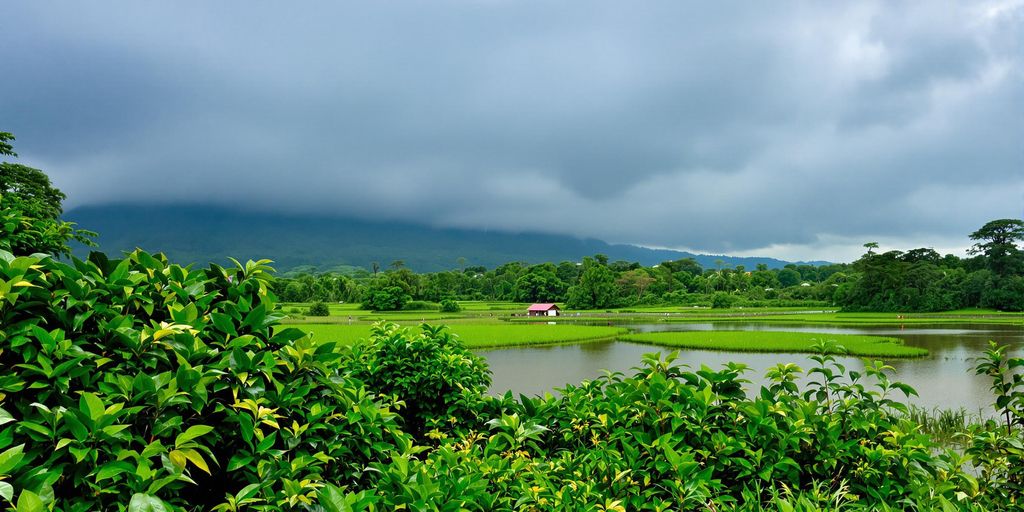
Why the Green Season Is Underrated
The rainy season in Thailand, spanning from June to October, often gets a bad rap among travelers. But here’s the thing: it’s not all constant downpours. Rain usually comes in short, intense bursts, leaving plenty of time to explore. The lush green landscapes that emerge during this time are nothing short of magical. Hills and forests become vibrant, and waterfalls swell, creating breathtaking scenery. If you’re into photography or just love nature, this season is perfect for capturing Thailand’s raw beauty. Plus, fewer tourists mean you can enjoy iconic spots like Khao Yai National Park or the temples of Chiang Mai without the usual crowds.
Best Deals and Discounts During Monsoon
Traveling during the rainy season can be a budget-friendly dream. Hotels and resorts often slash their prices, and flights tend to be cheaper too. You might even snag deals on tours and activities. Here’s a quick breakdown of the perks:
- Cheaper accommodations: Luxury stays at mid-range prices.
- Discounted flights: Save big on domestic and international routes.
- Fewer crowds: Enjoy a more intimate experience at popular attractions.
However, it’s worth noting that some island destinations might see limited accessibility due to weather. Planning ahead is key.
Top Natural Attractions to Visit
Rainy season or not, Thailand’s natural beauty shines year-round. But some spots truly come alive during this time:
- Erawan National Park: The waterfalls here are at their most stunning, with crystal-clear pools perfect for a dip.
- Chiang Rai’s Eco-Tours: Explore lush tea plantations and learn about hill tribe cultures.
- Khao Sok National Park: Kayak through dramatic limestone cliffs and enjoy the serenity of Cheow Lan Lake.
Traveling during the rainy season offers a unique side of Thailand that many miss. It’s quieter, greener, and surprisingly refreshing. Just pack a raincoat and embrace the adventure!
Seasonal Highlights for Beach Lovers

Best Time for Andaman Coast Adventures
If you’re dreaming of turquoise waters and dramatic limestone cliffs, the Andaman Coast is where you want to be. November to April is the sweet spot to visit gems like Phuket, Krabi, and Koh Phi Phi. The skies are blue, the seas are calm, and it’s prime time for activities like snorkeling and island hopping. Pro tip: get to Maya Bay early in the day to enjoy it before the crowds roll in.
Exploring the Gulf of Thailand
For those who prefer the Gulf side, think Koh Samui, Koh Phangan, and Koh Tao. The best time to head here is May through September. While the Andaman Coast may see rain, this side stays sunny and perfect for beach lounging or diving. Koh Tao, in particular, is a diver’s paradise, with vibrant coral reefs and abundant marine life to explore.
Weather Tips for Island Hopping
Island weather can be tricky, so it’s good to plan ahead. Here’s a quick breakdown:
| Season | Ideal Coast | Notes |
|---|---|---|
| Cool (Nov-Feb) | Andaman Coast | Best for clear skies |
| Hot (Mar-May) | Gulf of Thailand | Great for water activities |
| Rainy (Jun-Oct) | Gulf of Thailand | Avoid Andaman during monsoon |
Thailand’s beaches offer something for everyone, no matter the season. Whether you’re after thrilling adventures or just a hammock under a palm tree, timing your visit right makes all the difference.
Cultural Festivals and Events by Season
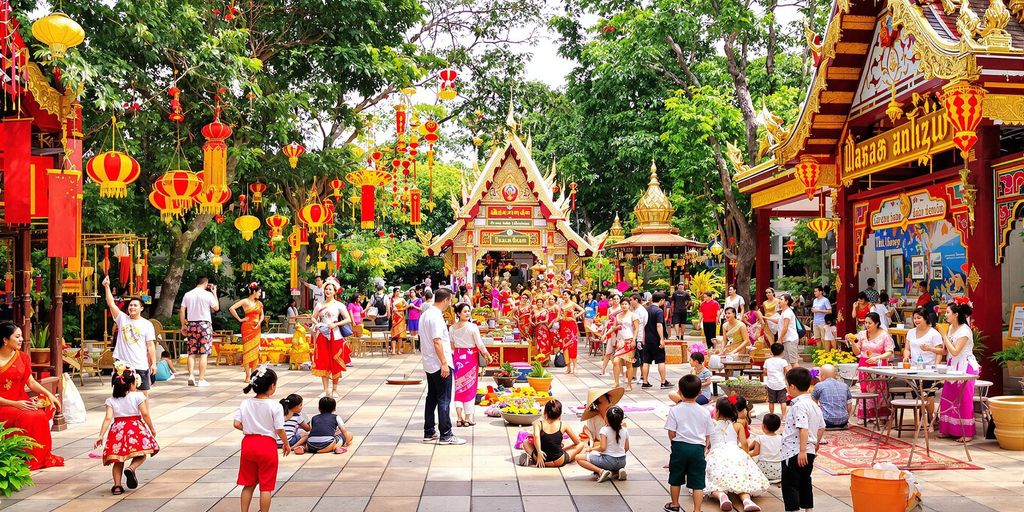
Songkran: Thailand’s Water Festival
Songkran, celebrated every April, is Thailand’s vibrant New Year festival. It’s a mix of high-energy water fights and deeply spiritual traditions. While the streets turn into splash zones, locals also visit temples to pour scented water over Buddha statues, symbolizing renewal. Chiang Mai, Bangkok, and Phuket are top spots to experience the festivities. For an unforgettable cultural immersion, explore the Songkran Festival during its three-day run.
Loy Krathong: A Festival of Lights
Held in November, Loy Krathong is one of Thailand’s most enchanting festivals. People release beautifully decorated baskets (krathongs) onto rivers and lakes, making wishes as they float. In Chiang Mai, the celebration coincides with the Yi Peng Lantern Festival, where thousands of lanterns illuminate the night sky. It’s a magical time to witness Thailand’s devotion to beauty and tradition.
Seasonal Celebrations Across Regions
Thailand’s festivals vary by region and season, offering unique cultural experiences:
- Lunar New Year (January/February): Bangkok’s Chinatown comes alive with dragons, drummers, and firecrackers.
- Flower Festival (February): Chiang Mai showcases stunning floral floats in a three-day celebration.
- Vegetarian Festival (October): Predominantly in Phuket, this nine-day event highlights abstinence and spiritual cleansing.
Thailand’s festivals are more than events—they’re windows into its heart and soul, blending joy, tradition, and community spirit.
Planning Your Trip Based on Activities
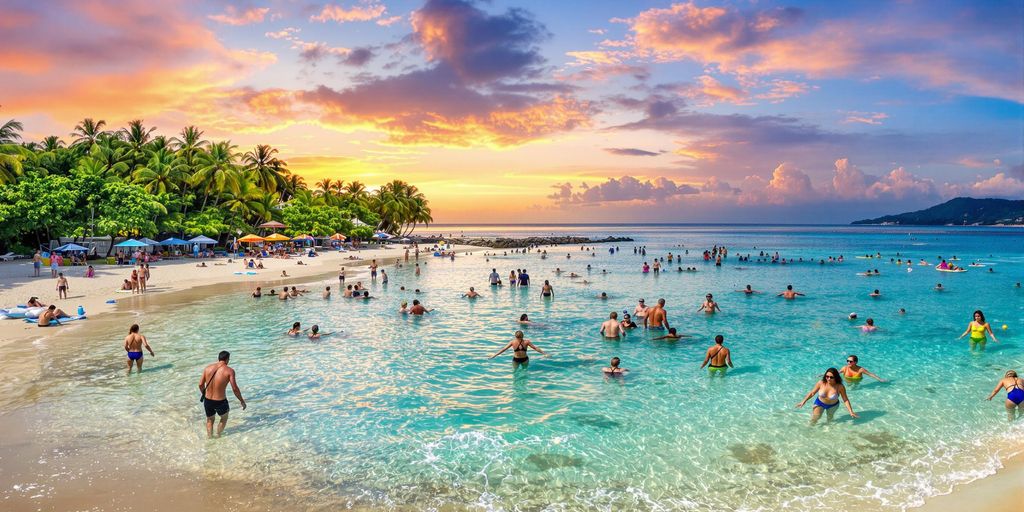
When to Visit for Adventure Sports
Thailand’s diverse landscapes make it a playground for thrill-seekers. From rock climbing in Krabi to zip-lining through Chiang Mai’s lush forests, there’s no shortage of activities for adrenaline junkies. The best time for these adventures? November to February. During these months, the weather is cooler and drier, ensuring you won’t be drenched in sweat—or rain—while scaling cliffs or racing through treetops.
If you’re into white-water rafting, aim for the rainy season (June to October). The rivers swell, offering more challenging rapids, especially in northern provinces like Chiang Mai and Mae Hong Son. Just make sure to check safety conditions before diving in.
Best Times for Scuba Diving and Snorkeling
For underwater explorers, Thailand’s coasts are a dream come true. The Andaman Sea (think Phuket and Koh Phi Phi) is best between November and April, when the waters are calm and visibility is crystal-clear. If you’re heading to the Gulf of Thailand (like Koh Samui or Koh Tao), the prime months are May to September.
Here’s a quick breakdown:
| Region | Best Months | Highlights |
|---|---|---|
| Andaman Coast | November-April | Vibrant coral reefs, manta rays |
| Gulf of Thailand | May-September | Whale sharks, colorful fish |
Don’t forget to pack your Thailand eSIM and a reef-safe sunscreen to protect those beautiful ecosystems while you’re exploring.
Seasonal Tips for Cultural Explorers
If temples and traditions are more your vibe, Thailand won’t disappoint. To truly soak in the culture, plan your trip around major festivals. Songkran, the Thai New Year, happens every April and is celebrated with nationwide water fights. It’s chaotic but unforgettable. For something more serene, Loy Krathong in November is magical, with thousands of floating lanterns lighting up the night sky.
When visiting temples, mornings are your best bet. Not only is it cooler, but places like Bangkok’s temples are less crowded, giving you a more peaceful experience. Always remember to dress modestly and respect local customs.
Thailand is more than just a destination; it’s a country that caters to every kind of traveler. Whether you’re chasing thrills, diving into underwater worlds, or immersing yourself in rich traditions, there’s a perfect season for your adventure.
Navigating Thailand’s Regional Climates
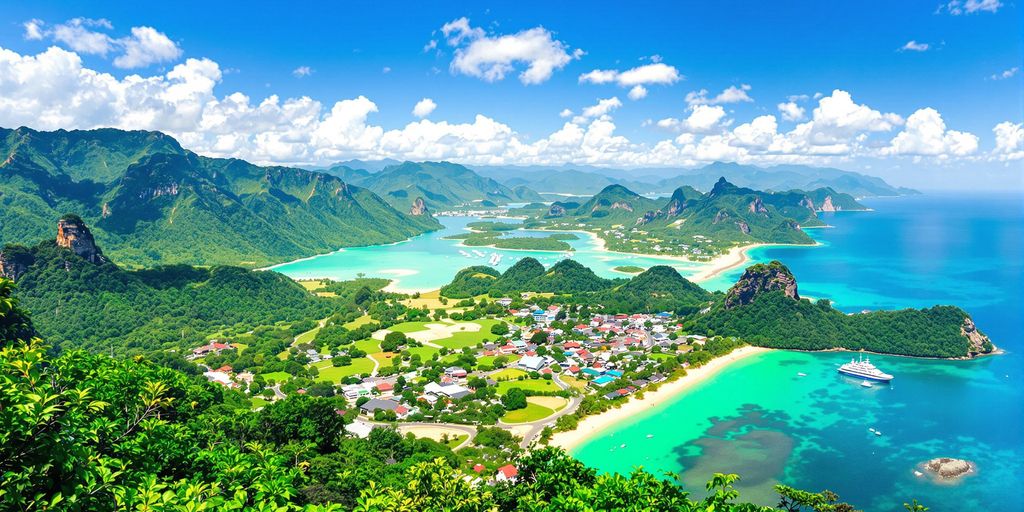
Weather Differences Between North and South
Thailand’s climate can feel like two different worlds depending on where you go. In the north, cities like Chiang Mai experience a tropical savanna climate. Summers are hot, and in April, temperatures can soar to over 100°F. Winters, however, bring cooler evenings, making it a favorite for travelers during the cool season. The south, on the other hand, stays warm year-round but is split into two monsoon patterns: the Andaman Coast (west) sees heavy rains May through October, while the Gulf of Thailand (east) gets its wettest months from October to December.
Best Times to Visit Bangkok and Chiang Mai
Bangkok, Thailand’s bustling capital, is warm to hot all year. The best time to visit is between November and January when temperatures are more manageable, hovering around 79-89°F. Chiang Mai, with its slightly cooler nights, is also ideal during this period. Avoid March and April here if possible, as the heat combines with agricultural burning, leading to hazy skies and discomfort for some.
How Climate Impacts Travel Plans?
Planning a trip to Thailand? Knowing the regional climates can make or break your experience. If you’re after pristine beaches, aim for the dry season on the Andaman Coast (November to April) or the Gulf of Thailand (February to August). For cultural exploration in the north, November to February is your sweet spot. The rainy season, while lush and green, can lead to travel delays and limited outdoor activities, so pack accordingly if you visit then.
Rain or Shine, Thailand’s Got a Prime!
Thailand’s ever-changing weather means there’s always a perfect spot waiting—just pack smart and stay connected with a Thailand eSIM!
Thailand’s regional weather quirks mean there’s always a perfect spot to explore—just plan around the seasons to make the most of your trip.
When exploring Thailand, it’s important to understand the different weather patterns in each region. From the hot and humid south to the cooler north, knowing what to expect can help you plan your trip better. Make sure to check the weather before you go, so you can pack the right clothes and enjoy your adventure to the fullest! For more tips and to get the best eSIM for your travels, visit our website today!
Packing Your Bags, Already?
Thailand is one of those places that truly has something for everyone, no matter the season. Whether you’re chasing sunny beach days, lush green landscapes, or vibrant cultural festivals, there’s always a good time to visit. The key is figuring out what kind of experience you’re after and planning around that. From the cool, dry months of winter to the lively, rain-soaked days of the monsoon, Thailand’s charm never fades. So, pack your bags, pick your season, and get ready to explore everything this amazing country has to offer.
Seamless Mobile Data Everywhere
